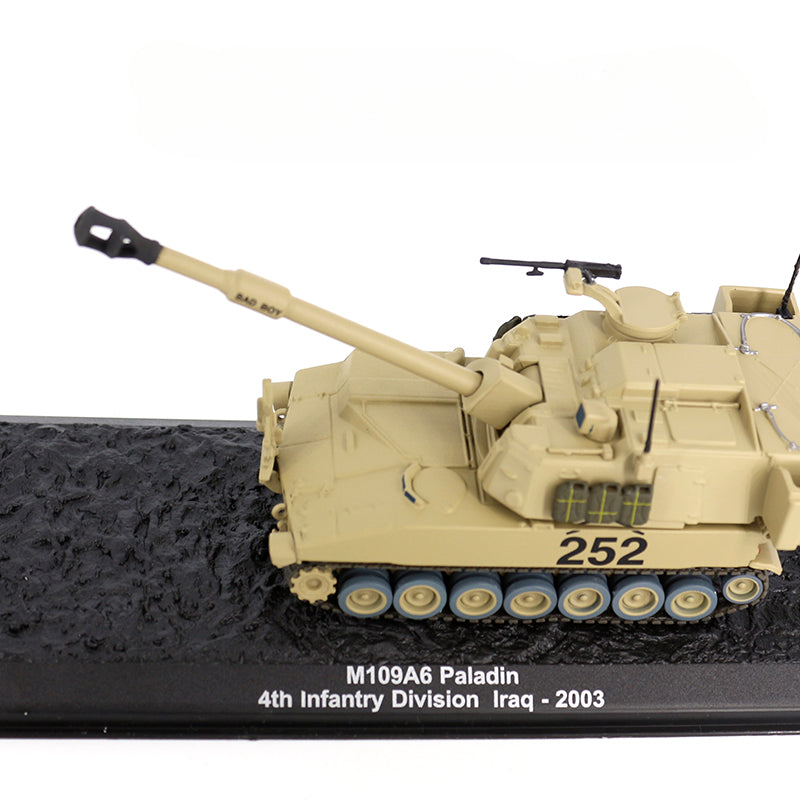old boy hobby
1/72 Scale M109A6 Paladin American Howitzer Diecast Model
1/72 Scale M109A6 Paladin American Howitzer Diecast Model
Couldn't load pickup availability
- diecast and pre-painted, ready to display
- material: metal & plastic
- scale: 1/72
The M109 is an American 155 mm turreted self-propelled howitzer, first introduced in the early 1960s to replace the M44. It has been upgraded a number of times, most recently to the M109A7. The M109 family is the most common Western indirect-fire support weapon of maneuver brigades of armored and mechanized infantry divisions.
The M109 has a crew of four: the section chief/commander, the driver, the gunner, and the ammunition handler/loader. The chief or gunner aims the cannon left or right (deflection) and up and down (quadrant).
The British Army replaced its M109s with the AS-90. Several European armed forces have or are currently replacing older M109s with the German PzH 2000. Upgrades to the M109 were introduced by the U.S. (see variants) and by Switzerland (KAWEST). With the cancellation of the U.S. Crusader, Non-Line-of-Sight Cannon and M1299 the M109A6 ("Paladin") will likely remain the principal self-propelled howitzer for the U.S. until a replacement enters service.
The Paladin model has improvements in the areas of survivability, RAM, and armament. This includes increased armor, a redesigned internal arrangement for safer ammunition and equipment storage, engine and suspension upgrades, and improvement of the M284 Cannon and M182A1 Mount. The greatest difference is the integration of an inertial navigation system, sensors detecting the weapons' lay, automation, and an encrypted digital communication system, which utilizes computer controlled frequency-hopping to avoid enemy electronic warfare and allow the howitzer to send grid location and altitude to the battery Fire Direction Center (FDC).
The battery FDCs coordinates fire through a battalion or higher FDC. This allows the Paladin to halt from the move and fire within 30 seconds, with an accuracy equivalent to the previous models when properly emplaced, laid, and safed—a process that previously required several minutes under the best of circumstances. Tactically, this improves the system's survivability by allowing the battery to operate dispersed in pairs across the countryside, and allowing the howitzer to quickly move between salvos, or if attacked by indirect fire, aircraft, or ground forces.
Ammunition storage of 155 mm rounds was increased from 36 to 39.
The US Army received the first Paladin in 1994 and the last of 950 in 1999.
--copied from Wikipedia
Share
















